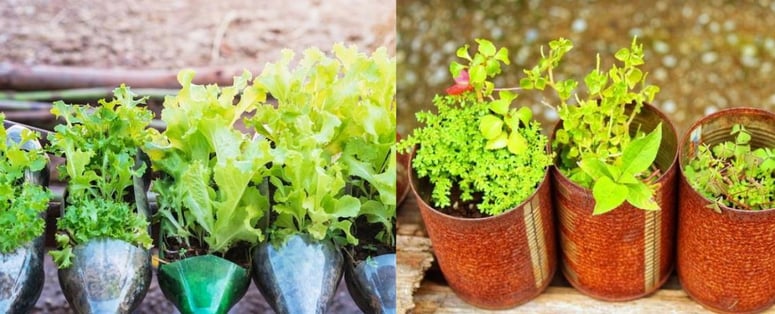If you’re keen on being ‘green’ and healthy this year, now might be a great time to plant up a veggie garden and start growing your own salad, soup and stew ingredients.

You really don’t need a lot of space to plant and grow your vegetables.
And the good news is that you really don’t need a lot of space - especially if you use containers, says Berry Everitt, CEO of the Chas Everitt International property group.
“A courtyard outside your kitchen, a terrace or even a balcony will do, as long as it gets about five or six hours of sun a day (more is too much for leafy veggies like lettuce), and it is not too windy and not too far from a water source,” says Everitt.
You also don’t need to go out and buy special containers, he says.
1. Recycle old pots
“You can recycle old buckets, washtubs, tyres, coffee cans and even baskets (lined with a bin bag) as well as any old plant pots you have handy to hold your veggies, as long as they have adequate drainage. And if they don’t already, you can create it by drilling a few holes in the bottom and putting in a layer of gravel or small stones,” says Everitt.
2. Make use of big mesh plastic
“The big plastic mesh bags that dog food, cement and fertiliser are packed in can also be used if you wash them out and roll down the tops before filling with the gravel layer and your growing mixture. This should be a mixture of peat moss, potting soil with vermiculite and some good quality compost to boost growth.”
Writing in the Property Signposts newsletter, Everitt says you should position your containers before you fill them and they become too heavy to move around - and leave some space between or around them so you can water and weed easily. Putting some gravel down on these ‘pathways’ will also help to repel snails.
“Almost any kind of veggies can be grown in containers although most will require a depth of at least 12cm to 20cm to allow proper rooting. Use your smaller containers for things like radishes, spring onions and herbs, medium-size ones for tomatoes, peppers, carrots, lettuce, spinach and egg plants, and the large ones for bush beans and ‘vine-growers’ like squash, cucumbers and courgettes. Potatoes will do very well in a stack of old tyres that you fill as they grow.”
3. If you have a small space, plant different crops in close proximity
If you only have a small space, companion planting is a very good idea not only so that you can get a good mix of edibles from your containers, but also so that your plants can help each other fight off pests and put nutrients back in the soil, says Everitt.
“Lettuce and peppers do well when planted together with onions or garlic, for example, while basil and celery are good companions for tomatoes, and mielies (corn) are good with any kind of squash or pumpkin. Marigolds scattered in between your veggies are also good pest repellents, while peas and beans put nutrients back into the soil where you are growing carrots and other root veggies.”
4. Water your vegetables correctly
Watering correctly is also very important when growing veggies and you need to be careful not to let your containers dry out when it is very hot or windy, he says.
“It is really easy to set up a simple drip-irrigation system for your container garden, but otherwise you should apply water with a watering-can or a fine spray attachment on a garden hose, preferably in the early morning or evening when it is cooler,” says Everitt.
“And lastly, you need to remember to feed the garden that feeds you, by mixing in some more compost or liquid organic fertiliser every time you replant one of your containers.”